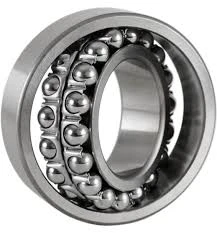
Nov . 19, 2024 19:31 Back to list
thin section deep groove ball bearings
Understanding Thin Section Deep Groove Ball Bearings
Thin section deep groove ball bearings are pivotal components in various engineering applications, known for their ability to support both radial and axial loads while minimizing space and weight. As the demand for more compact and efficient machinery increases, these specialized bearings are becoming increasingly popular in industries such as aerospace, automotive, robotics, and precision instrumentation.
Design and Structure
The defining feature of thin section deep groove ball bearings is their reduced cross-section, which allows them to fit in tight spaces where traditional bearings would be impractical. These bearings typically feature a smaller inner and outer diameter while maintaining sufficient load-carrying capacity. The deep groove design of the raceways enables the bearings to accommodate both radial and axial loads, making them versatile for various applications.
The thin-walled construction is achieved by utilizing high-quality materials such as stainless steel or ceramics, which not only reduce weight but also enhance durability and resistance to corrosion. Additionally, these materials provide improved thermal properties, allowing the bearings to function efficiently at higher temperatures.
Benefits and Applications
One of the primary advantages of thin section deep groove ball bearings is their lightweight design, which contributes to a reduction in the overall weight of the machinery. This is particularly important in industries like aerospace, where every gram counts. Furthermore, their ability to handle misalignment and accommodate thermal expansion makes them ideal for dynamic applications, including motors and pumps.
thin section deep groove ball bearings

These bearings are widely used in medical devices, where precision and reliability are critical. For instance, in surgical robots, thin section deep groove ball bearings ensure smooth and precise movements, significantly enhancing the performance and safety of medical procedures. Similarly, in the automotive industry, these bearings play a crucial role in electronic power steering systems and other lightweight components that demand high performance without the burden of additional weight.
Manufacturing and Maintenance
The manufacturing process of thin section deep groove ball bearings involves advanced techniques to ensure high precision and quality. Computer numerical control (CNC) machinery is often employed to achieve the tight tolerances required for optimal performance. Furthermore, the use of high-tech materials and coatings can enhance the functionality and lifespan of these bearings, making them a cost-effective solution over time.
Maintenance of thin section deep groove ball bearings is essential for maximizing their lifespan and performance. Regular lubrication is crucial to reduce friction and wear, while periodic inspections can help identify any potential issues before they escalate into significant problems. By adhering to maintenance guidelines, users can ensure these bearings operate efficiently and reliably over an extended period.
Conclusion
In conclusion, thin section deep groove ball bearings represent an excellent solution for applications requiring compact design and high performance. Their unique construction allows them to support significant loads while occupying minimal space, making them invaluable in numerous industries. As technology continues to advance, the importance of these bearings will only grow, helping to create more efficient, lightweight, and reliable machines. Understanding their features, benefits, and maintenance considerations is essential for engineers and designers looking to optimize their designs and operations.
Latest news
-
Premium Deep Groove Ball Bearings | High Speed & Reliability
NewsAug.29,2025
-
Durable Scaffolding Clamps - Secure & Reliable Tube Connectors
NewsAug.28,2025
-
Common Failures in Thrust Ball Bearings and Solutions
NewsAug.22,2025
-
How Tapered Roller Bearings Can Take Shock Loads
NewsAug.22,2025
-
Angular Bearings in High-Precision Spindles
NewsAug.22,2025
-
The Impact of Misalignment on Cylindrical Roller Bearing Performance
NewsAug.22,2025
